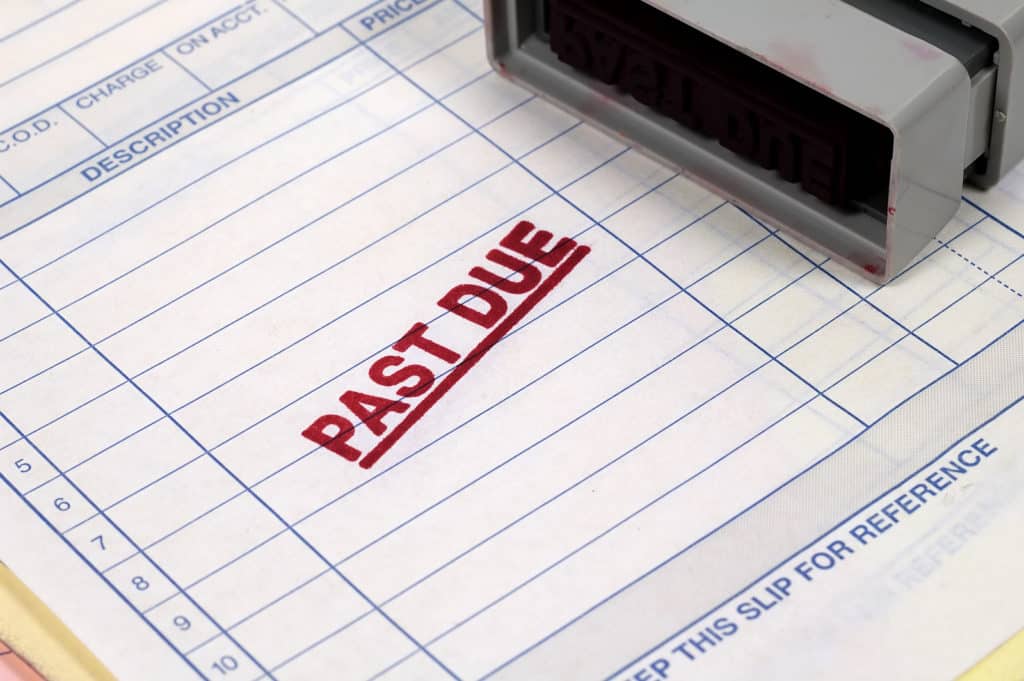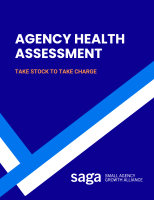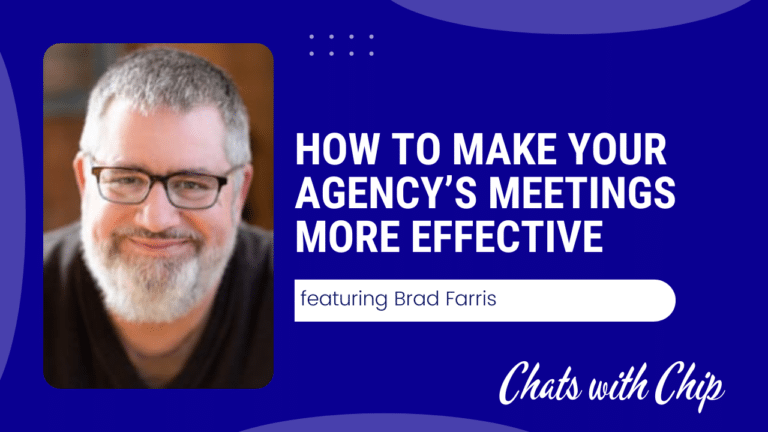Every agency deals with clients who pay too slowly from time to time. Creating — and sticking to — a standard process can help make these incidents less common and resolve them more quickly.
Very few agency owners enjoy time spent on financial matters (other than cashing profit checks!). Even fewer relish having collections conversations with clients.
Let’s look at how you can spend less time while getting paid faster.
Before the client becomes a client
A good collections process starts even before the client signs on the dotted line.
Every client of your agency should have a written contract. (And if you don’t already do that, stop reading this article and read this one first to learn more about why good contracts matter.)
Your standard contract should set out terms that help facilitate collections. It should specify:
- When you will send invoices
- When payments are due
- What late fee will be applied when necessary
- What recourse you have for late payments
Setting out your payment terms clearly and unambiguously in the client contract will help to avoid misunderstandings and give you the leverage you need to get paid in a timely fashion.
Project vs. retainer work
Payment terms matter for both retainer and project work. Use your standard contract to drive for your ideal terms, but also understand that some clients — especially larger companies and government agencies — may push back pretty aggressively.
You will need to decide for yourself what is fair and what you can live with in the negotiations.
- Monthly retainer agreements should typically be due and payable in advance (e.g. the June fee must be paid in full by June 1). Many clients will push back and insist on payment in arrears (e.g. the June fee must be paid by July 1 or even later).
- Project agreements frequently get split up into multiple installments. If you can get 50% paid up front before work begins, that’s a good starting point. However, the exact terms will depend on the scope of the project.
When it comes to project fees, make sure you don’t rely simply on defined milestones. Instead, include dates as safety nets so you can avoid clients who delay providing feedback or other necessary items in order to avoid timely payment.
For example, you could state that a payment is due “upon client approval of the final deliverable or within 30 days of submission of the deliverable to the client for approval, whichever comes first.” (Obviously customize for your specific needs and the details of the project in question.)
Specify your recourse for non-payment
What happens when the client is late in paying? What are your rights then?
That’s something that you should cover clearly in the client contract.
Some recourse options include:
- Late fees (typically, though not always, a percentage framed as interest on the outstanding debt).
- Stop work provisions that allow the agency to suspend deliverables or other services until the account is brought current.
- License restrictions that withhold transfer of any intellectual property licensing until all debts are paid to the agency.
The specific options you employ will depend in part on the type of work your agency performs and what levers you believe will be most effective in getting clients to pay quickly.
Note that just because your contract permits you to take certain actions does not require it. For example, I have only actually assessed interest fees on late invoices or suspended service a handful of times over the last 20 years, but every contract has those provisions so I can use it as leverage to encourage payments.
Before the payment is due
After someone becomes a client, you still have steps to take to encourage timely payment before you even need to think about engaging in a collections process. (And hopefully to avoid that need at all!)
Get the right information
As part of the new client on-boarding process, find out what that organization requires to get payments processed quickly. Key things to know include:
- Who is the billing contact?
- Who must approve each invoice?
- What information should be included on the invoice? (Like P.O. number or specific language describing the work)
- Are there any vendor registration, tax forms, or other processes that need to be completed?
Invoice consistently in a timely fashion
The biggest impediment to agencies getting paid quickly is the invoicing process itself. Too many agencies send invoices on different days each month, based on when the team has time to get it done.
If you want to get paid on time, you need to invoice on time.
Depending on the type of work that you do, pick one or more dates per month to send invoices — and stick to it. Don’t let other tasks get in the way.
Make sure to leave sufficient time for your clients to move the invoices through their own processes. Don’t expect to send an invoice and get payment the next day.
Provide a variety of payment options
Make it easy for your clients to pay. Make sure that every invoice gives the client the option to pay by wire, ACH, or credit card.
Even though some of these methods will incur processing fees for you, don’t pass those on directly to the client. It’s part of the cost of doing business.
The faster you can get your clients to pay, the better it is for your business. A lot of that comes down to making it convenient for them.
When the payment is late
No matter how good your process is and how well you have done following the advice above, some clients will end up paying late.
You need to have a defined process for how to handle these situations. There’s no one-size-fits-all collections process because it depends to a large degree on your agency’s structure and the types of clients you work with.
For example, if you have an accounts receivable team member and your clients typically have dedicated accounts payable resources, these individuals can work directly with each other to work through the process. There’s no risk of hard feelings with the client contact in situations like this.
If you’re a smaller agency and your client doesn’t have its own accounting department, then you likely have to be a bit more diplomatic, though still firm.
Clients owe you the respect of paying you on time.
They committed to the payment terms when they signed the initial contract. Plus it’s the right thing to do.
Don’t wait to highlight the late payment
The sooner you contact the client about payment, the sooner you are likely to receive it.
If your clients pay by paper check, you won’t want to reach out on the first day a payment is late — the check quite literally might be in the mail. By the third day after the due date, though, you can pretty much eliminate slow mail service as the cause.
On the other hand, if you have been successful in getting your clients to pay electronically, then you could send the first friendly reminder right after the due date.
Start with a friendly reminder
Your first past-due communication should be very brief and polite. After all, we all have things fall through the cracks from time to time.
You can automate these messages from within many invoicing services, but I’m a big believer in personalized notes. Most agencies won’t have so many clients (and so many of them that are past due) that this is a heavy lift. And it’s harder to ignore a personal message than an obviously computer-generated one.
Something like this would likely work well:
“This is just a friendly reminder about Invoice 1234 that was due on July 1, 2019. I’m attaching a copy for your convenience. Details about available payment methods are included below.”
You don’t need to pen a lengthy missive. The key things are to reference the specific invoice and due date (the amount due is optional in the body of the email). In addition, make sure that the methods of payment are very clear. If they can pay online, include a link right there in the email to encourage them to resolve the invoice right as they are reading the message.
Be persistent
Do you run the risk of the client feeling like you’re nagging them? Sure. But if you are delivering on your end of the agreement by providing excellent services then you deserve to have them hold up their end of the bargain by paying on time.
What is the difference between persistent and obnoxious?
Here’s where you need to exercise some judgement. You need to take everything you know about the client relationship and figure out what the best approach will be to get the invoice settled.
If it is their first payment, you want to be pretty strict to set the tone for the future of the relationship. If they think they can pay 30 or 60 days late without any repercussions, they likely will.
On the other hand, if it is a client who always pays on time but they have a staff member out on leave, you might cut them a little slack.
You never want to turn into the stereotypical bill collector calling all day every day. It rarely gets anything resolved.
Apply your leverage intelligently
Use the terms of your contract to help prod the client. If you have the ability to cut off service temporarily until a payment is made, you should let the client know.
“You had indicated that we could expect payment of Invoice 1234 by July 1, 2019, but we didn’t receive it. While we understand things sometimes come up and delay payment, we need to ensure that we are being compensated in a timely fashion for the work we are doing on your behalf. Therefore, if we don’t receive payment in full by July 10, 2019, we will have no choice but to suspend service under our agreement until those funds have been received.”
Of course, if you make such a statement, you need to be prepared to follow through. Never say you are going to suspend work unless you actually plan to do it.
Now, if you are pretty confident you are going to get paid, you may want to keep doing work behind the scenes so you don’t put yourself in a bind when work resumes. But don’t perform any client-facing work when you have put a pause on things.
Know when to walk away
If you have ongoing payment issues with a client or a client who has multiple unpaid invoices, it may be time to terminate the relationship.
Your client contract should include language that details when and how you can end thee agreement prematurely. Be sure to review those terms before you take any actions you can’t easily walk back.
Keep in mind that ending the agreement only stops the bleeding. It doesn’t get you paid.
In fact, it can significantly diminish the chances that you get paid in full without resorting to legal action. After all, if you aren’t doing work for the client (or preparing to do so), then what leverage do you have outside of litigation?
Collecting amounts due after termination
For lapsed or terminated clients, you will need to be much more firm in your language when you pursue payments — especially if neither party expects to work with the other again.
This doesn’t mean you should give up just yet.
For these past clients, you can use one or more of the following approaches:
- Send a letter on company letterhead demanding payment for past due amounts.
- Increase the frequency of phone calls to the billing contact and their superiors. Move up the ladder at the client’s organization as appropriate in order to get someone’s attention and get the issue resolved.
- Have your law firm send a letter on their stationery (preferably both electronically and via mail/FedEx since people take greater note of paper notifications in the digital era).
As a last resort you can either work with a collections agency (who will take a cut of whatever is eventually collected) or go to court. Your lawyer should provide advice about the best course of action, which will depend upon the amount owed, the location of the parties, the terms of the contract, and any facts unique to the specific client-agency relationship.
Be prepared for the client to make counterclaims. The more aggressive you get, the more aggressive the other party is likely to behave.
That means you can expect that they will question the quality and completeness of your work — regardless of the accuracy of the claim. After all, very few people are willing to say “yes, I owe you $5,000 but I’m simply not going to pay it regardless of how valid the claim is.”
In the end, you may need to settle on a partial payment to resolve the issue. That’s why it is so critical to make sure you don’t get too far behind with a client in the first place.
Know when (and how) to write off bad debts
No matter how hard you try, you will likely have a few experiences in the life of your agency where you need to write off an amount owed to you by a client.
The reality is that the older your invoice is, the less likely it is to ever get paid (though you should keep pursuing all of them because I have been in organizations where invoices as old as 3 years past due actually got fully paid).
You should work with your accountant to figure out when to give up on an invoice and how to record it in your books. Never just delete an old unpaid invoice without talking to your professional advisor.
Healthy accounts receivable should be an agency-wide KPI
Getting paid on time makes a big difference to the overall health of the agency, so every owner should be tracking this data regularly by looking at A/R aging reports.
You should define the specific metrics for your own situation, but invoices less than 30 days past due aren’t all that concerning (in most cases), whereas anything over 90 days past due are a red flag. Anything over 180 days is very unlikely (though not impossible) to get paid.
Build a collections process that works for your agency and its clients and stick to it consistently. That’s the best way to ensure you have healthy cash flow and don’t waste needless time chasing after unpaid bills.











